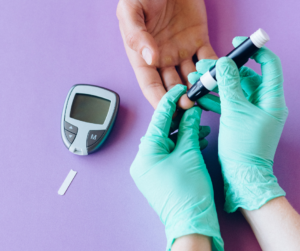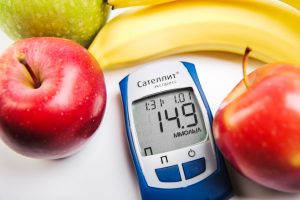
What You Need to Know About Diabetes
 Diabetes is increasing at an alarming rate in the United States. According to the CDC’s (Centers for Disease Control) National Diabetes Statistics Report for 2020 cases of diabetes have risen to an estimated 37 million (or 1 in 10 people in the U.S.). November is National Diabetes Month and is a great time to bring attention to this disease and its impact on millions of Americans.
Diabetes is increasing at an alarming rate in the United States. According to the CDC’s (Centers for Disease Control) National Diabetes Statistics Report for 2020 cases of diabetes have risen to an estimated 37 million (or 1 in 10 people in the U.S.). November is National Diabetes Month and is a great time to bring attention to this disease and its impact on millions of Americans.
What is Diabetes?
Diabetes is a chronic health condition that affects how your body converts food to energy. With diabetes, the body either no longer makes insulin or the insulin that is made no longer works as well as it should. Either way, high levels of glucose (a form of sugar) build up in the blood. When this happens, your body can respond in some serious ways that include liver damage, stroke, heart disease, vision loss, kidney disease and damage to the feet or legs.
Most Common Types of Diabetes
- Type 1 – usually diagnosed in children and teens. Type 1 diabetics need to take insulin every day to survive.
- Type 2 – develops over many years and is usually diagnosed in adults (but is developing more today in children and teens also). With Type 2 diabetes, your body doesn’t use insulin well and can’t keep blood sugar at normal levels.
- Gestational Diabetes – develops in pregnant women who have never had diabetes.
7 Warning Signs of Diabetes
- Frequent Urination
- Increased Thirst or Dry Mouth
- Unexpected Weight Loss
- Persistent Hunger
- Foot Pain and Numbness
- Fatigue
- Blurred Vision
Type 1 Diabetes
Type 1 diabetes, also known as juvenile diabetes, occurs when the body does not produce insulin. Insulin is a hormone responsible for breaking down the sugar in the blood for use throughout the body. People living with type 1 diabetes need to administer insulin with injections or an insulin pump.
There is no cure for type 1 diabetes. Once a person receives their diagnosis, they will need to regularly monitor their blood sugar levels, administer insulin, and make some lifestyle changes to help manage the condition.
Type 2 Diabetes
Type 2 diabetes, the most common type of diabetes, occurs when your cells don’t respond normally to insulin, which is known as insulin resistance. You can develop type 2 diabetes at any age but it occurs most often in middle-aged and older people and tends to appear gradually. In most cases, medication along with changes in exercise and diet can help manage type 2 diabetes.
Gestational Diabetes
Gestational diabetes is a condition in which a hormone made by the placenta prevents the body from using insulin effectively. Unlike type 1 diabetes, gestational diabetes is not caused by a lack of insulin, but by other hormones produced during pregnancy that can make insulin less effective. Gestational diabetic symptoms disappear following delivery but gestational diabetes increases your risk for type 2 diabetes later in life.
Outlook
There is good news for those living with diabetes – and those at risk. Experts are learning more all the time about lifestyle steps for diabetes control and prevention. New medications and devices can also help you control your blood sugar and prevent complications. For more information on diabetes and how to make good choices, visit the American Diabetes Association website.

